Flights of fancy: can we unravel the mystery of flight?
Charles Darwin’s theory of natural selection is one of the most important and ground-breaking scientific concepts ever constructed. Even so, there are some aspects of evolution that scientists are still trying to understand. Dr Ashley Heers from California State University in Los Angeles, USA, is studying juvenile birds to unravel one such mystery that has had evolutionary biologists puzzled for decades: the evolution of flight
TALK LIKE AN EVOLUTIONARY BIOLOGIST
NATURAL SELECTION – the process of adaptation in which traits that give an organism an advantage persist from generation to generation. This is one of the main drivers of evolution
RUDIMENTARY FEATURES – underdeveloped body parts that are incapable of performing functions to the same degree that their fully-developed counterparts can
LOCOMOTOR STRUCTURES – parts of an animal’s body that help it move around
MUSCULOSKELETAL MODELS – digital models that help scientists understand how an animal’s bones and muscles work together to produce movement
Charles Darwin proposed his ground-breaking theory of natural selection over 150 years ago, but to this day, scientists are still grappling with some of the theory’s intricacies. The theory states that species evolve through incremental, beneficial changes that accumulate over incredibly lengthy periods. In this way, fins evolved into legs, eyespots evolved into eyes, and the front limbs of certain dinosaurs evolved into the wings of modern-day birds.
One problem with the theory that scientists have had trouble solving is the dilemma of rudimentary stages. This dilemma arises because some highly specialised structures, such as wings, only seem to perform their function when they are fully formed. According to the theory of natural selection, wings would have had to start as small, underdeveloped ‘proto-wings’ that could not have been capable of producing flight. So, what function did these ‘proto-wings’ have? What were they selected’ for, and how did they evolve into the fully formed wings that allow birds to fly?
Or, as Mivart first asked in 1871, “What use is ‘half a wing’?” Based at California State University, Dr Ashley Heers is an evolutionary biologist whose work involves unravelling this mystery to explore a dilemma that has challenged scientists in her field since Darwin first posed his theory.
WHAT ARE RUDIMENTARY LOCOMOTOR STRUCTURES?
Much of Ashley’s work involves studying the form and function of rudimentary locomotor structures found in birds. These are body parts that a bird uses for moving around but that are smaller or less developed than equivalent body parts in other closely related animals. For example, a juvenile bird’s wings are much less developed than the wings of an adult bird. They are smaller, with less effective feathers and smaller wing muscles anchored to less robust bones.
Rudimentary locomotor structures can also be found in adult birds of some species. Flightless birds, such as some steamer ducks, have lost the ability to fly during their evolutionary history. As a result, they have wings that are incapable of flight but that are still able to perform other functions, such as swimming.
Even fossil records contain traces of rudimentary structures. For example, the extinct predecessors of birds – a subset of theropod dinosaurs – had small, feathered forelimbs with less robust bones than modern-day birds.
Ashley explains, “In this case, immature birds are developing the ability to fly and extinct dinosaurs were evolving the ability to fly, so both sets of animals have rudimentary or ‘transitional’ locomotor structures.” Understanding how these rudimentary structures develop and help juvenile birds to move around may provide insight into their evolutionary history, from appendages that were not used for locomotion to fully formed wings capable of flight.
HOW DOES ASHLEY STUDY THESE STRUCTURES?
“I use many techniques in my research,” explains Ashley, “because each provides a different type of information.” She uses photographs and microscopes to examine the structure of feathers and wings, dissections to determine the sizes of muscles and their configurations, and CT or laser scans to create 3D bone models to study how bones change in shape and size during development.
Ashley also needs to understand how these body parts function. By combining X-ray and high-speed videos with other techniques, she can measure movement and performance and create digital models of the birds she is studying. This allows her to assess how bones, muscles and feathers work together when juvenile and adult birds are moving in particular ways.
This technique is called musculoskeletal modelling and it can get very complex but is, essentially, a four-step process. The first step involves taking a CT or laser scan of the bird to visualise its bones and construct a digital model of its skeleton. Secondly, a dissection is performed to measure muscles and understand how they attach to the skeleton so that they can be added to the digital model. The third step is to use X-ray videos to see how birds move their bones when flapping their wings, and add these movements to the model. Finally, the force produced by the bird while flapping is added to the model.
With a complete model, Ashley can run simulations of the bird’s movements to understand how the bones and muscles work together and how much force or power may need to be produced. “One of the great things about musculoskeletal models,” says Ashley, “is that we can change things in our model that we can’t change in a real bird – such as wing or muscle size, muscle attachments or flapping movements – which allows us to see how those variables affect performance.”
WHAT CAN WE LEARN FROM THESE MODELS?
Working with live birds and these models, Ashley and her colleagues, including Ken Dial, Bret Tobalske, Brandon Jackson and Terry Dial, have shown that juvenile birds use their underdeveloped wings to help improve the performance of their legs. For example, young birds flap their wings to help them run up steep inclines or to slow their descent on the way back down. They also use their wings to help them jump higher and swim faster. As the birds grow and become stronger, their wings help them to run up steeper inclines and jump higher, which eventually leads to the birds being able to fly.
Ashley says, “This is really important in terms of thinking about the evolution of flight in extinct dinosaurs because it shows us that rudimentary structures are useful – even crucial to the survival of some animals.” In the same way that a young bird slowly develops flight as its wings grow, extinct species could have slowly evolved flight as larger and more powerful wings were acquired through the process of natural selection.
Ashley’s work has helped clarify the dilemma of rudimentary stages. Early proto-wings were able to evolve into fully formed wings because they were useful – probably for many functions but, perhaps, just not the uses scientists had expected. Having helped uphold Darwin’s theory of natural selection, Ashley is excited about her future work. She says, “Birds are extremely diverse, and in the grand scheme of things, I’ve only scratched the surface!”
Reference
https://doi.org/10.33424/FUTURUM266
NATURAL SELECTION – the process of adaptation in which traits that give an organism an advantage persist from generation to generation. This is one of the main drivers of evolution
RUDIMENTARY FEATURES – underdeveloped body parts that are incapable of performing functions to the same degree that their fully-developed counterparts can
LOCOMOTOR STRUCTURES – parts of an animal’s body that help it move around
MUSCULOSKELETAL MODELS – digital models that help scientists understand how an animal’s bones and muscles work together to produce movement
Charles Darwin proposed his ground-breaking theory of natural selection over 150 years ago, but to this day, scientists are still grappling with some of the theory’s intricacies. The theory states that species evolve through incremental, beneficial changes that accumulate over incredibly lengthy periods. In this way, fins evolved into legs, eyespots evolved into eyes, and the front limbs of certain dinosaurs evolved into the wings of modern-day birds.
One problem with the theory that scientists have had trouble solving is the dilemma of rudimentary stages. This dilemma arises because some highly specialised structures, such as wings, only seem to perform their function when they are fully formed. According to the theory of natural selection, wings would have had to start as small, underdeveloped ‘proto-wings’ that could not have been capable of producing flight. So, what function did these ‘proto-wings’ have? What were they selected’ for, and how did they evolve into the fully formed wings that allow birds to fly?
Or, as Mivart first asked in 1871, “What use is ‘half a wing’?” Based at California State University, Dr Ashley Heers is an evolutionary biologist whose work involves unravelling this mystery to explore a dilemma that has challenged scientists in her field since Darwin first posed his theory.
WHAT ARE RUDIMENTARY LOCOMOTOR STRUCTURES?
Much of Ashley’s work involves studying the form and function of rudimentary locomotor structures found in birds. These are body parts that a bird uses for moving around but that are smaller or less developed than equivalent body parts in other closely related animals. For example, a juvenile bird’s wings are much less developed than the wings of an adult bird. They are smaller, with less effective feathers and smaller wing muscles anchored to less robust bones.
Rudimentary locomotor structures can also be found in adult birds of some species. Flightless birds, such as some steamer ducks, have lost the ability to fly during their evolutionary history. As a result, they have wings that are incapable of flight but that are still able to perform other functions, such as swimming.
Even fossil records contain traces of rudimentary structures. For example, the extinct predecessors of birds – a subset of theropod dinosaurs – had small, feathered forelimbs with less robust bones than modern-day birds.
Ashley explains, “In this case, immature birds are developing the ability to fly and extinct dinosaurs were evolving the ability to fly, so both sets of animals have rudimentary or ‘transitional’ locomotor structures.” Understanding how these rudimentary structures develop and help juvenile birds to move around may provide insight into their evolutionary history, from appendages that were not used for locomotion to fully formed wings capable of flight.
HOW DOES ASHLEY STUDY THESE STRUCTURES?
“I use many techniques in my research,” explains Ashley, “because each provides a different type of information.” She uses photographs and microscopes to examine the structure of feathers and wings, dissections to determine the sizes of muscles and their configurations, and CT or laser scans to create 3D bone models to study how bones change in shape and size during development.
Ashley also needs to understand how these body parts function. By combining X-ray and high-speed videos with other techniques, she can measure movement and performance and create digital models of the birds she is studying. This allows her to assess how bones, muscles and feathers work together when juvenile and adult birds are moving in particular ways.
This technique is called musculoskeletal modelling and it can get very complex but is, essentially, a four-step process. The first step involves taking a CT or laser scan of the bird to visualise its bones and construct a digital model of its skeleton. Secondly, a dissection is performed to measure muscles and understand how they attach to the skeleton so that they can be added to the digital model. The third step is to use X-ray videos to see how birds move their bones when flapping their wings, and add these movements to the model. Finally, the force produced by the bird while flapping is added to the model.
With a complete model, Ashley can run simulations of the bird’s movements to understand how the bones and muscles work together and how much force or power may need to be produced. “One of the great things about musculoskeletal models,” says Ashley, “is that we can change things in our model that we can’t change in a real bird – such as wing or muscle size, muscle attachments or flapping movements – which allows us to see how those variables affect performance.”
WHAT CAN WE LEARN FROM THESE MODELS?
Working with live birds and these models, Ashley and her colleagues, including Ken Dial, Bret Tobalske, Brandon Jackson and Terry Dial, have shown that juvenile birds use their underdeveloped wings to help improve the performance of their legs. For example, young birds flap their wings to help them run up steep inclines or to slow their descent on the way back down. They also use their wings to help them jump higher and swim faster. As the birds grow and become stronger, their wings help them to run up steeper inclines and jump higher, which eventually leads to the birds being able to fly.
Ashley says, “This is really important in terms of thinking about the evolution of flight in extinct dinosaurs because it shows us that rudimentary structures are useful – even crucial to the survival of some animals.” In the same way that a young bird slowly develops flight as its wings grow, extinct species could have slowly evolved flight as larger and more powerful wings were acquired through the process of natural selection.
Ashley’s work has helped clarify the dilemma of rudimentary stages. Early proto-wings were able to evolve into fully formed wings because they were useful – probably for many functions but, perhaps, just not the uses scientists had expected. Having helped uphold Darwin’s theory of natural selection, Ashley is excited about her future work. She says, “Birds are extremely diverse, and in the grand scheme of things, I’ve only scratched the surface!”
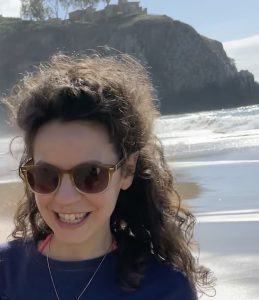 DR ASHLEY HEERS
DR ASHLEY HEERS
College of Natural and Social Sciences, Biological Sciences, California State University, Los Angeles, USA
FIELD OF RESEARCH: Evolutionary Biology
RESEARCH PROJECT: Examining the wing movements of young birds to explore the development and evolution of bird flight
FUNDER: National Science Foundation (NSF)
 DR ASHLEY HEERS
DR ASHLEY HEERS
College of Natural and Social Sciences, Biological Sciences, California State University, Los Angeles, USA
FIELD OF RESEARCH: Evolutionary Biology
RESEARCH PROJECT: Examining the wing movements of young birds to explore the development and evolution of bird flight
FUNDER: National Science Foundation (NSF)
ABOUT EVOLUTIONARY BIOLOGY
Evolutionary biology is the study of how life on Earth evolved. It helps scientists understand how the species on Earth presently came into existence, as well as how other species, like some dinosaurs, became extinct. Understanding how organisms develop, evolve and adapt to changes in their environments has important practical implications for fields such as ecology and conservation.
Evolutionary biology can also help us retrace the story of life on Earth that connects all living organisms on the planet. Exploring these questions and unravelling these mysteries can help us understand humanity’s place in the vast web of life.
WHAT DISCIPLINES DO EVOLUTIONARY BIOLOGISTS MAKE USE OF?
Ashley’s research into the complex evolution of flight demonstrates the multidisciplinary nature of evolutionary biology. Adult birds do not just spring into life; they develop from an embryo into a hatchling and then, finally, into an adult capable of flight. In the same way, every species on earth did not just appear; they evolved from ancestors that may now be long extinct.
“This is why I combine biology, palaeontology and engineering,” says Ashley. “Biology for a developmental perspective, palaeontology for an evolutionary perspective and engineering to ‘build’ digital birds and assess how factors that change during development and evolution influence locomotion.”
WHAT DOES A TYPICAL WORKING DAY LOOK LIKE FOR AN EVOLUTIONARY BIOLOGIST?
“That completely depends on the time of year,” explains Ashley. “In the spring and summer, I often have a cohort of developing birds, so my students and I spend a lot of time taking care of them and collecting data on anatomy and performance.” Later in the year, Ashley and her team analyse these data so that they can start building models of their birds. “And between all of these activities, I teach, so sometimes it feels a bit like juggling!” she adds.
WHAT ARE THE CHALLENGES OF BEING AN EVOLUTIONARY BIOLOGIST?
“Being patient is one of the most challenging things about my job,” says Ashley. “It takes an incredible amount of work to rear a cohort of birds, and, afterwards, the analyses can be challenging or at least time-consuming. But it’s also very rewarding, and I love examining my final graphs because they tell my birds’ stories.”
EXPLORE A CAREER IN EVOLUTIONARY BIOLOGY
• Volunteering in a research lab is a great way to gain practical experience. Zoos, wildlife rehabilitation centres, the US Forest Service and the US Fish and Wildlife Service all offer research placements for school students. You could also consider writing to university scientists whose work you find interesting.
• Get involved in citizen science projects. Ashley suggests The Cornell Lab of Ornithology, which has several ongoing projects.
• Ashley also advises expanding your hobbies. Going birdwatching and reading popular science books, such as Neil Shubin’s Your Inner Fish, are great ways to introduce yourself to the field.
• According to Indeed, the average salary for an evolutionary biologist in the US is around $70,000
PATHWAY FROM SCHOOL TO EVOLUTIONARY BIOLOGY
• Studying biology at school is important for all types of evolutionary biology.
• An understanding of palaeontology is also helpful, depending on what evolutionary scale you are interested in. MyFossil provides a list of opportunities for high-school students.
• Other subjects that might prove to be useful are anatomy, physiology and biomechanics.
HOW DID ASHLEY BECOME AN EVOLUTIONARY BIOLOGIST?
WHAT WERE YOUR INTERESTS WHEN YOU WERE YOUNGER?
I have always loved animals, babies and books. When I was little, I was obsessed with the ‘Nancy Drew’ mysteries and wanted to be a ‘sleuth’ and, gradually, that desire morphed into scientific sleuthing. I also became interested in geology and fossils in 6th grade.
WHAT SPARKED YOUR LOVE OF BIRDS?
I wasn’t especially interested in birds until I read that birds are the descendants of dinosaurs – in other words, they are living dinosaurs. The fact that I could go outside and watch a ‘dinosaur’ was the most amazing thing I had ever learned. I knew then that I wanted to explore the mystery of how birds evolved, and when I later found out that a similar mystery takes place during bird development, I was hooked!
HOW DID YOU COME TO STUDY BIRD LOCOMOTION AND THE EVOLUTION OF FLIGHT?
Going to college, I knew I wanted to study evolution, and I dabbled in many different areas. But I kept returning to the evolution of bird flight, partially because I love animals, and partially because I love mysteries and I wanted to know how birds became so unique. When I was working on my senior thesis, it became obvious to me that I didn’t understand how living birds ‘work’. How could I interpret the anatomy of fossils if I didn’t know how anatomy and locomotion are linked in living birds? So, I joined Ken Dial’s Flight Laboratory at the University of Montana, where the first studies exploring how baby birds utilise their wings were conducted. UM Flight Lab’s resources, facilities and personnel allowed me to follow my passion: babies, birds, dinosaurs and evolution… and I’m still doing that!
DO YOU HAVE ANY STANDOUT MEMORIES FROM YOUR TIME WORKING WITH LIVE BIRDS?
Some of my favourite memories are of my birds expressing their personalities. In graduate school, I started with chukar partridges, and I’d always wear a sweatshirt when working with them because the chicks liked sleeping in my pockets. Later I got peafowl, and the juveniles would play tug-a-war with feathers and chase each other around their pen in what appeared to be a game of tag. Before working with birds, I had no idea that they had such personalities.
WHAT ARE YOUR AMBITIONS FOR THE FUTURE?
Compiling my PhD thesis was thrilling and I’m still working on developing that story, so I want to continue working with birds with rudimentary wings. I would also like to expand into other animal groups with rudimentary structures, and I want to write books and maybe even help animate a film.
WHAT IS YOUR FAVOURITE FACT ABOUT BIRDS?
I think my favourite thing about birds is how versatile they are. They can use their wings and legs either independently or together, and this versatility yields amazing variations in locomotion, development, foraging styles, habitat preferences, etc. Some birds are very specialised, and others are jacks of all trades that can fly through the air, walk on land and swim underwater – no other vertebrate can do those things.
WHAT DO YOU ENJOY DOING IN YOUR FREE TIME?
I love to read. I also enjoy being outside (hiking, camping, etc.), trying different types of exercise like barre (which combines ballet and yoga), DIY projects, travelling and visiting family. My nieces and nephews are some of my favourite people, and we have a lot of fun exploring and birdwatching (although we’re still working on which way the binoculars are supposed to face).
ASHLEY’S TOP TIPS
01 Be curious and open-minded.
02 Go outside and observe your animals, and read, read, read about them!
03 At university, find a good academic ‘family’ that will support you both scientifically and emotionally.
Do you have a question for Ashley?
Write it in the comments box below and Ashley will get back to you. (Remember, researchers are very busy people, so you may have to wait a few days.)

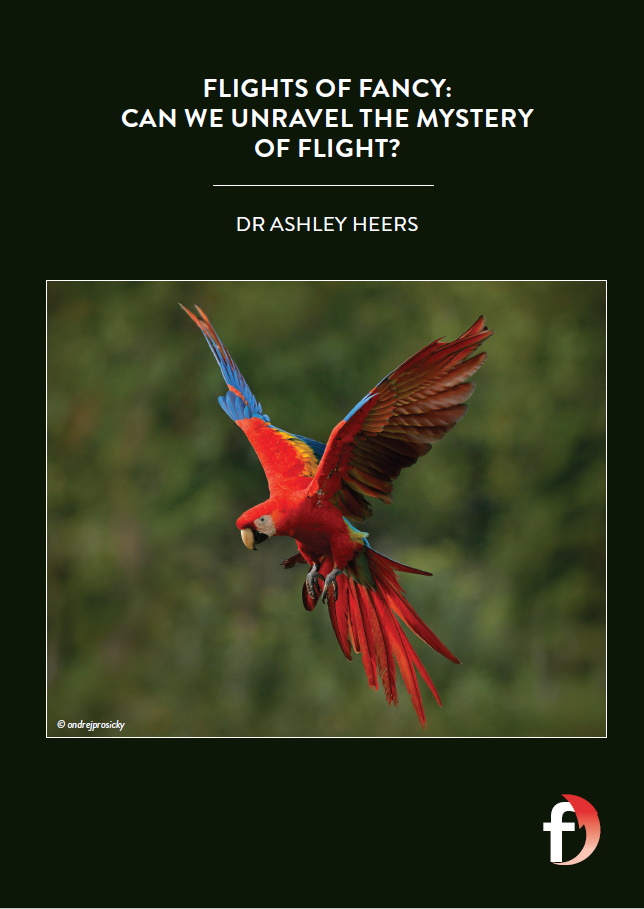
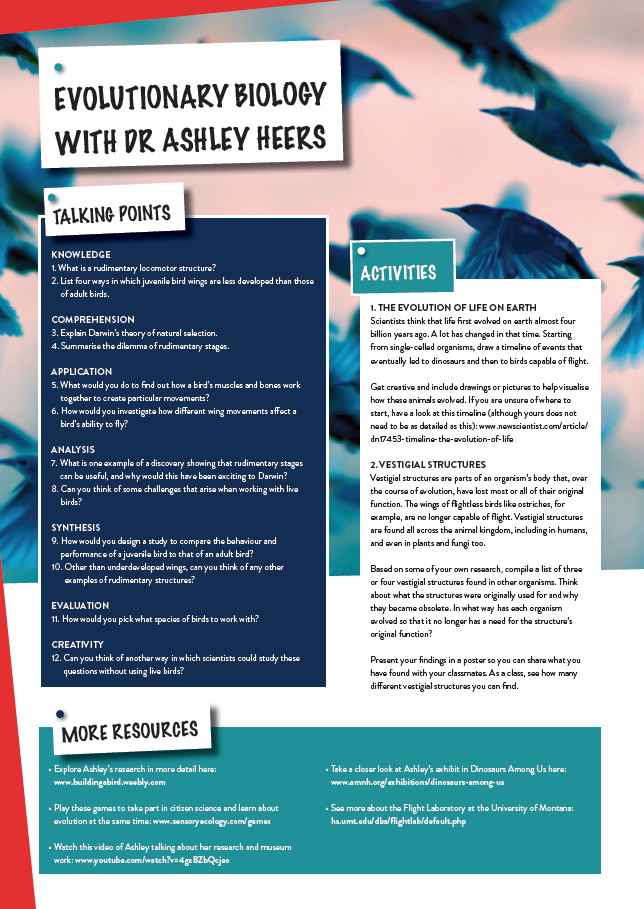

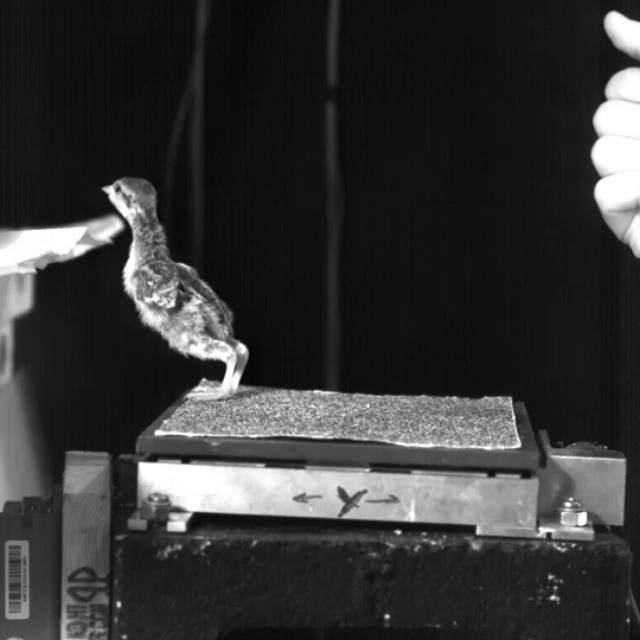

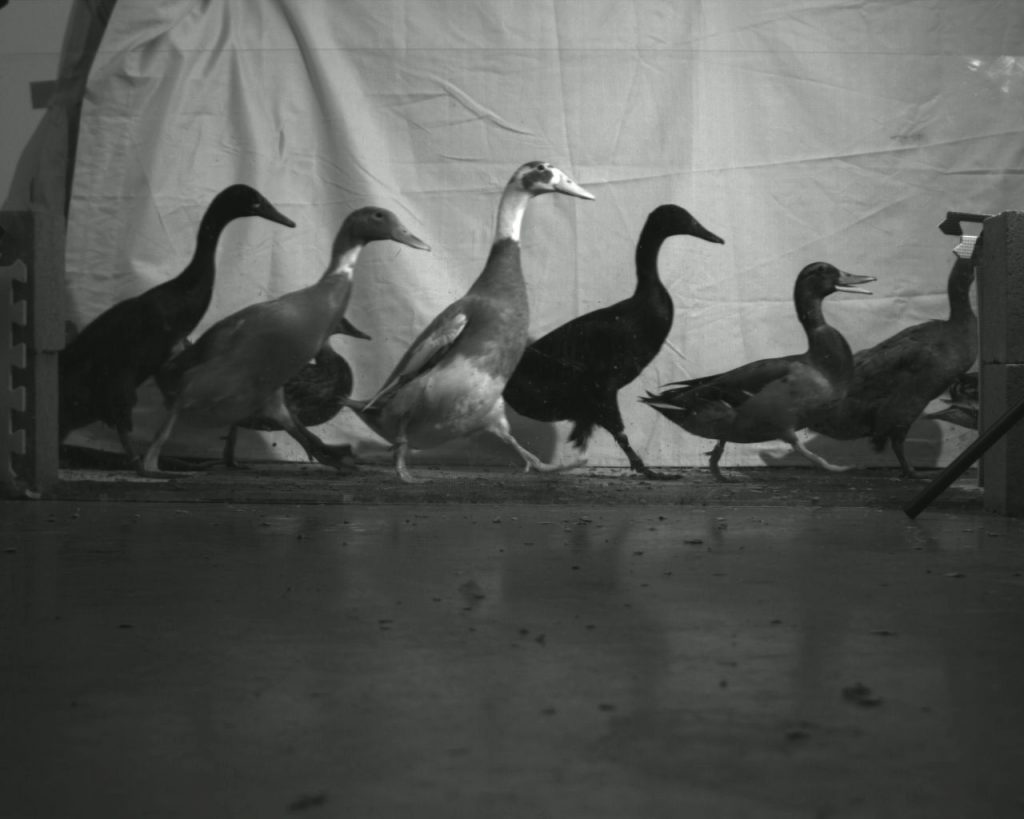
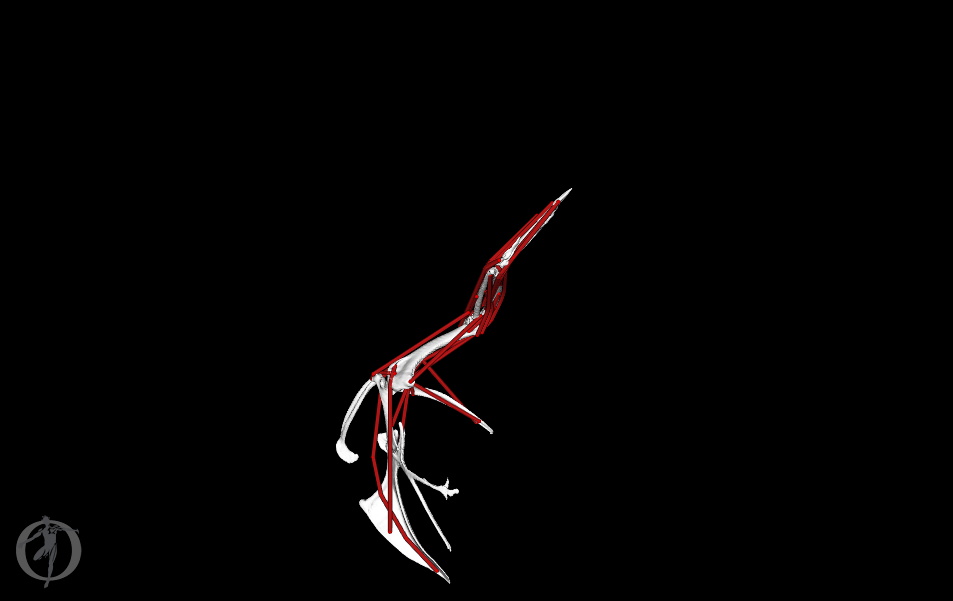

“What is the use of ‘half a wing’?
Just as a young bird flies slowly as its wings grow, extinct species may have evolved slowly as they acquired larger and stronger wings through natural selection.”
To do this in artificial selection you need to select specifically /e.g. breed dogs with bigger and stronger legs/, how did natural selection select for this when natural selection does not select systematically for a particular trait! Then how does it select for the development of a particular body part, in this case the wing? Moreover, if the direction and intensity of the selection pressure is constantly changing in an unpredictable way, how does the wing evolve in the face of constant changes in selection pressure?